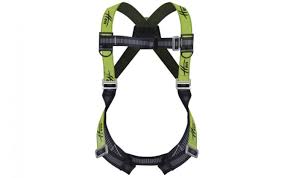
In the construction and hardware sectors, ensuring worker safety is non-negotiable, and a critical component of this is the proper inspection of safety harnesses before each use. Whether you’re sourcing hardware for export or managing on-site operations in Dubai, a thorough pre-use check can prevent accidents and save lives. This guide provides a detailed, authoritative walkthrough for inspecting safety harnesses to meet industry standards and regulatory requirements.
Also read – Ultimate Guide to the Best Safety Helmets in the UAE: Top Brands, Features & Buyer Mistakes to Avoid
Why Pre-Use Inspection of Safety Harnesses is Crucial
Safety harnesses are personal protective equipment (PPE) designed to arrest falls and protect users from serious injury. Over time, exposure to environmental factors, wear and tear, or improper storage can compromise their integrity. A pre-use inspection ensures that any defects are identified early, reducing the risk of equipment failure during critical moments. For hardware suppliers and construction managers, this practice is not just about compliance; it’s about fostering a culture of safety and responsibility on site.
Step-by-Step Guide to Inspecting Your Safety Harness
Follow this comprehensive checklist before every use:
1. Check the Label and Documentation: Start by verifying that the harness has a legible label indicating its manufacturer, model, serial number, and date of manufacture. Ensure it complies with relevant standards such as EN 361 or ANSI Z359.11. For hardware intended for export, confirm that certifications are up-to-date and appropriate for the target market.
2. Inspect the Webbing: Examine the entire length of the webbing for cuts, fraying, abrasions, or signs of chemical damage. Run the webbing through your fingers to feel for any inconsistencies. Pay close attention to areas near hardware attachments and edges.
3. Examine Stitching and Seams: Look for broken, pulled, or worn stitches, especially at stress points like the dorsal D-ring, shoulder straps, and leg loops. Any compromised stitching can significantly reduce the harness’s strength.
4. Inspect Metal Components: Check all buckles, D-rings, and adjusters for cracks, distortion, corrosion, or sharp edges. Ensure they move freely without sticking. Corrosion can be a particular concern in humid or coastal environments like Dubai.
5. Look for UV Damage or Discoloration: Prolonged exposure to sunlight can degrade synthetic materials. Discoloration, brittleness, or fading may indicate UV damage, which weakens the harness.
6. Check for Modifications or Unauthorized Repairs: Never use a harness that has been altered or repaired improperly. Only manufacturer-authorized repairs should be accepted.
7. Perform a Function Test: Buckle and unbuckle all fasteners to ensure they engage and release smoothly. Adjust straps to confirm they hold securely without slipping.
If any defect is found during inspection, immediately remove the harness from service and tag it as defective. Do not use it until it has been professionally evaluated or replaced.
Best Practices for Maintenance and Storage
Regular inspection must be complemented by proper care. Clean harnesses according to manufacturer instructions, typically with mild soap and water, and allow them to air dry away from direct heat or sunlight. Store in a cool, dry place, hung up or laid flat to avoid creases or pressure points that could cause damage. For businesses in the hardware export sector, educating end-users on these practices is essential for product longevity and safety.
Defining an Industrial Equipment Supplier in Construction
An industrial equipment supplier provides machinery, tools, and safety gear essential for construction operations. In a construction context, their primary functions include sourcing reliable PPE like safety harnesses, ensuring compliance with local and international standards, offering technical support, and providing timely delivery to keep projects on schedule. When choosing a supplier in Dubai, key criteria include product quality and certifications, reliability of supply, competitive pricing, after-sales support, and knowledge of regional regulations and conditions. For more on safety standards, refer to the Occupational Safety and Health Administration guidelines.
Partner with a Trusted Supplier for Your Safety Needs
For hardware shopkeepers and construction firms in Dubai, having a dependable supplier for safety equipment and tools is crucial. CRYSTAL BUILDING MATERIAL, based in Deira, Dubai, stands out for its commitment to quality and service. They offer competitive wholesale prices on a wide range of essential products, including measuring tapes, hammers, adjustable wrenches, and non-sparking tools, ensuring you get durable and reliable gear for your operations.
Their dependable service includes timely deliveries and expert advice, helping you maintain safety standards without compromising on efficiency. By specializing in high-demand items, they cater precisely to the needs of the construction and hardware sectors, making them a go-to partner for businesses looking to enhance their inventory with trusted products.
Visit their website at https://www.gulfinquiries.com/ to explore their offerings and place your order. Ensure your team is equipped with the best tools and safety equipment from a supplier you can trust.
